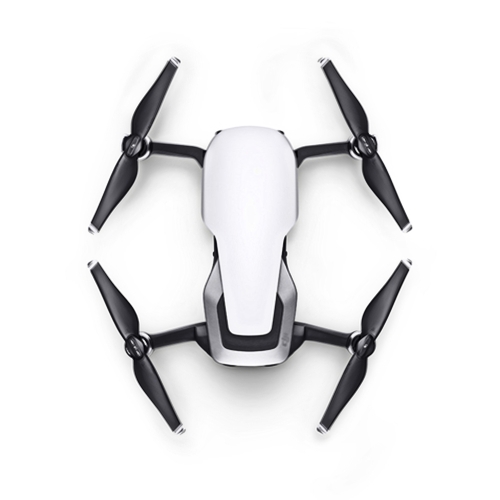Introduction to Precision Flying
Precision flying is a skill that requires a great deal of practice and dedication. It is the ability to control a drone in the air with a high degree of accuracy and precision. This skill is becoming increasingly important as drones become more widely used for commercial and recreational purposes. It is essential for pilots to master precision flying in order to ensure the safety of their drone and the people and property around them.
Precision flying is not an easy skill to learn and requires a great deal of practice and patience. However, with the help of GPS-enabled drones, precision flying can become much easier and more accurate. GPS-enabled drones are equipped with technology that allows them to be navigated with greater accuracy and precision than traditional drones. This article will explore the benefits of GPS-enabled drones and how they can help pilots master the art of precision flying.
Benefits of GPS-Enabled Drones
GPS-enabled drones are equipped with a Global Positioning System (GPS) that allows them to be navigated with greater accuracy and precision than traditional drones. GPS-enabled drones provide pilots with the ability to plan their flight paths in advance and to track their drones in real-time. This allows pilots to fly with greater accuracy and precision, as they can see where their drone is in relation to its destination.
In addition to providing pilots with greater accuracy and precision, GPS-enabled drones also offer a number of other benefits. These include the ability to plan and execute complex flight paths, the ability to fly in difficult weather conditions, and the ability to fly in areas with limited visibility. GPS-enabled drones are also able to fly autonomously, which can be a great help to pilots who are not experienced in precision flying.
Understanding Drone Navigation
In order to master the art of precision flying, it is important for pilots to understand how drones are navigated. Drones are navigated using a combination of GPS and other sensors, such as gyroscopes and accelerometers. These sensors help the drone to determine its position in relation to its destination and enable it to fly with greater accuracy and precision.
In addition to GPS, drones can also be navigated using visual navigation. Visual navigation involves the use of cameras and other sensors to help the drone fly in a particular direction. This can be particularly useful in areas with limited visibility or in difficult weather conditions.
Drone Flight Planning
In order to fly with precision, it is important for pilots to plan their flight paths in advance. This is where GPS-enabled drones can be a great help. GPS-enabled drones allow pilots to plan their flight paths in advance and to track their drones in real-time. This allows pilots to fly with greater accuracy and precision, as they can see where their drone is in relation to its destination.
In addition to planning flight paths, pilots should also consider the weather conditions in which they will be flying. This is important as certain weather conditions can make precision flying more difficult. Pilots should also consider the terrain they will be flying over, as certain terrain can also make precision flying more difficult.
Operating a GPS-Enabled Drone
Once a pilot has planned their flight path, they must then operate their GPS-enabled drone. This involves controlling the drone in the air with a high degree of accuracy and precision. This can be done using the drone’s GPS and other sensors, such as gyroscopes and accelerometers. Pilots should also consider the wind and other weather conditions, as these can affect the drone’s flight path.
In addition to controlling the drone in the air, pilots should also consider the safety of their drone and the people and property around them. This can be done by ensuring that the drone is always within the pilot’s line of sight and that the pilot is aware of any potential hazards.
Challenges of Precision Flying
Precision flying can be a challenging skill to master, as it requires a great deal of practice and patience. Additionally, there are a number of other challenges that pilots may face when attempting to fly with precision. These include the potential for technical difficulties, the need to be aware of changing weather conditions, and the need to be aware of potential hazards.
Mastering Precision Flying
Despite the challenges that come with precision flying, it is possible to master the skill with the help of GPS-enabled drones. GPS-enabled drones provide pilots with the ability to plan their flight paths in advance and to track their drones in real-time. This allows pilots to fly with greater accuracy and precision, as they can see where their drone is in relation to its destination.
In addition to planning flight paths, pilots should also consider the weather conditions in which they will be flying. This is important as certain weather conditions can make precision flying more difficult. Pilots should also consider the terrain they will be flying over, as certain terrain can also make precision flying more difficult.
Finally, pilots should practice their precision flying skills in order to become more proficient. This can be done by setting up practice courses and flying in different weather conditions. With practice, pilots can become more confident and proficient in their precision flying skills.
Conclusion
In conclusion, mastering the art of precision flying with GPS-enabled drones can be a challenging but rewarding experience. GPS-enabled drones provide pilots with the ability to plan their flight paths in advance and to track their drones in real-time. This allows pilots to fly with greater accuracy and precision, as they can see where their drone is in relation to its destination. Additionally, pilots should consider the weather conditions in which they will be flying and the terrain they will be flying over. Finally, pilots should practice their precision flying skills in order to become more proficient. With practice, pilots can become more confident and proficient in their precision flying skills.









































